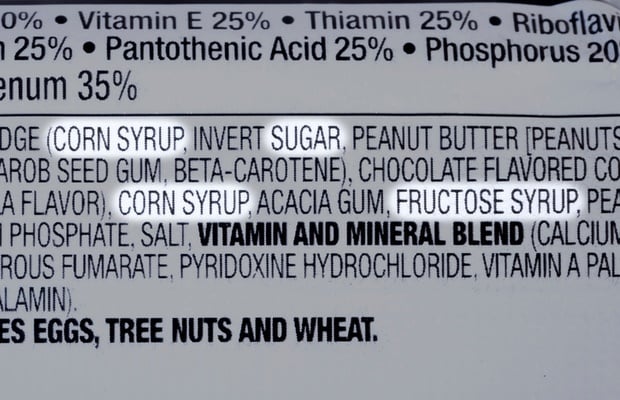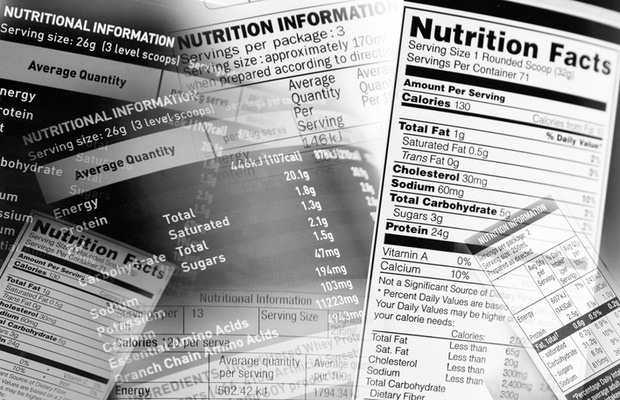
In South Africa, many people become ill and die from non-communicable diseases, such as diabetes, heart disease and certain cancers. An unhealthy diet has been identified as one of the four preventable risk factors for these diseases.
In a study published earlier this year, just over one third of South Africans indicated that they frequently or always read nutrition information on food labels.
Why don't we pay more attention to labels?
The main reasons given for not reading nutrition information included buying the same product all the time and not being interested in nutrition information. The average food and nutrition label knowledge score was 44.4% (fair or below average), with those who often read the nutrition information on labels having a significantly higher score.
The study also indicated that labels could be improved to be more user-friendly – people would prefer less complex wording, more pictures and colours, a single health endorsement logo and bigger font sizes to help make label reading easier.
Here are some tips to help you use food labels to make better choices:
1. First look at the ingredient list
The ingredients in a food product are listed in order of weight, with the largest quantity first. If a product has an ingredient that you are trying to cut down on on top of the list, you will know that it contains more of this ingredient than the ones at the bottom. In this case you may want to find a more suitable alternative.

2. Then look at the nutritional information table
The nutritional information table provides information about the energy and nutrients a product contains. The key things to look for in this table are the energy, protein, carbohydrates, sugar, fats, fibre and sodium content. The information is usually presented per 100g or 100ml, and per the recommended serving size.
The best way to decide if a product is suitable for you is to evaluate the nutrients per 100g or 100ml, as products have different recommended serving sizes and the serving indicated on the label may be either less or more than you normally consume. When comparing products, the same rule applies; look at the 100g or 100ml information as you will be comparing equal quantities.

3. Know what the numbers should be
Total fat: According to South African law, a manufacturer can only make a claim of "low fat" if the total fat content of the product is ≤3g per 100g solid food and ≤1.5g for liquids. Very few protein-rich foods meet this recommendation (for example, a 100g portion of cooked skinless chicken breast contains 4g fat and one large boiled egg 5g).
The following guidelines are more useful when choosing foods for a lower fat content:
- Foods high in carbohydrates (fresh fruit, cereals, breads, grains, canned vegetables) should contain ≤3g fat/100g.
- Foods high in protein (most fresh and processed chicken and meat products, soft cheeses, eggs, tinned fish, processed fish) should contain ≤10g fat/100g.
- In terms of meat, if the words "lean or trim" are used, the fat content should be ≤10g/100g and in the case of "extra lean" ≤5g/100g.
- Packaged sauces and gravies (pour-over sauces and gravies, cook-in-sauces, packaged soups) should contain ≤5g fat/≤100g, "lite" salad dressings should contain ≤15g fat/100g and hard cheeses (such as cheddar) ≤13g fat/100g.
- If a product claims to be low in saturated fat, the cutoff point is 1.5g per 100g solids and 0.75g per 100ml liquids.
Total sugar: Food labels indicate how much sugar (added and naturally occurring sugars) are contained in a product. Dairy and fruit contain naturally occurring sugars and plain versions of dairy and whole fruit don’t contain any added sugars. When it comes to added sugar, it is recommended that you choose products that contain 10g sugar or less per 100g of product.
Dietary fibre: Adults need at least 25g of dietary fibre per day for digestive health, which assists with weight management, heart health and blood glucose control. It will be easier to incorporate the recommended amount of fibre in your diet by choosing products that contain at least 6g dietary fibre per 100g whenever possible.
Salt or sodium: It is recommended that you limit your sodium intake to a maximum of 2 000mg per day (5g or one teaspoon of salt). A product labelled "low salt" should contain ≤120mg sodium/100g product or ≤300 mg salt/100g product (1g salt = 400mg sodium).
To save time in the aisles, look at the nutrition information of the products on company websites before you go shopping and make a short list of the key values to assess your product.

Please note: This article focuses on nutrition-related information on food labels and does not address additives, food processing methods or endorsements.
Image credit: iStock




 Publications
Publications
 Partners
Partners










